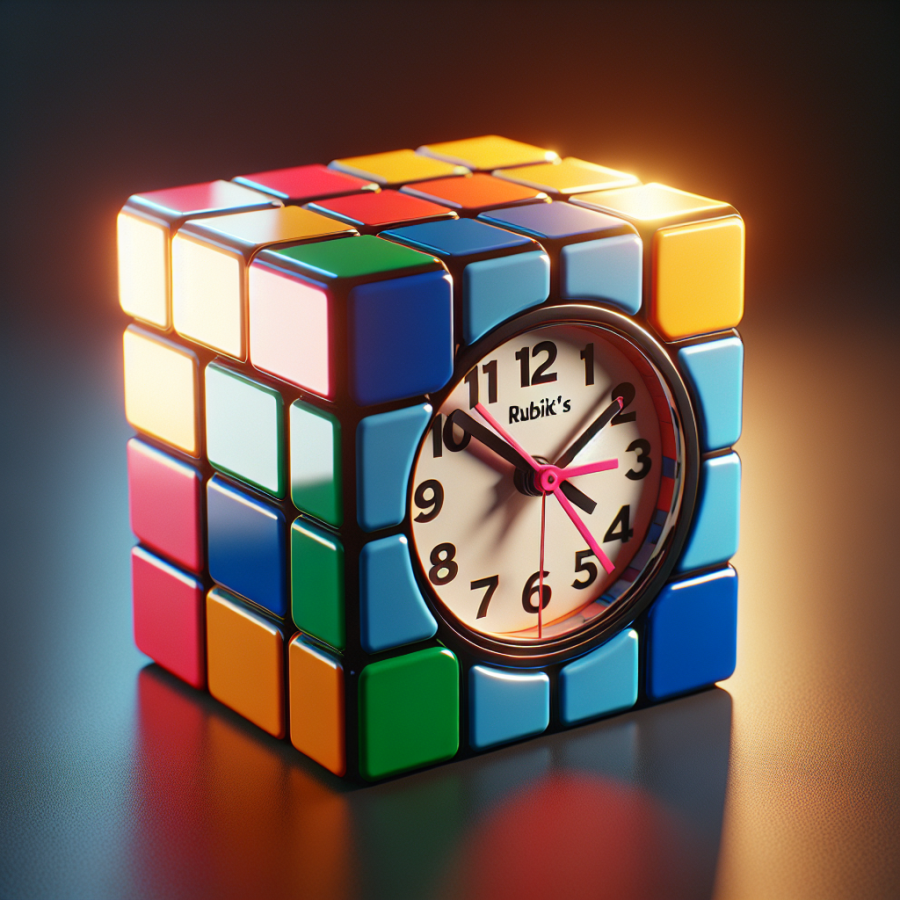Unlocking the Secrets of the Rubik's Clock Mechanism
The Rubik's Clock is a lesser-known puzzle compared to its cubic cousin, but it presents its own unique challenges and complexities. At its core, the Rubik's Clock is a mechanical puzzle involving eight clocks on either side of the device, four in each corner. The objective is to maneuver these clocks so that all hands point to 12 o'clock simultaneously.
Understanding the inner workings of the Rubik's Clock is essential for anyone wishing to master it. The magic of the mechanism lies in its gear system. The puzzle features gears connecting certain clocks to each other. By turning the wheels on the corners of the puzzle, you engage these gears, which can manipulate multiple clocks at once. Additionally, there's a pin system in place, allowing the user to 'lock' and 'unlock' certain clocks, selecting which ones will be affected by the turning of the wheels.
To begin solving the Rubik's Clock, it's crucial to recognize the influence of the pins. Their positions determine the active gear paths, and therefore which clocks will move during any given manipulation. This selective movement is the key to the puzzle – it allows you to alter some clocks without disturbing others already set at the correct time.
Another secret of the Rubik's Clock lies in its algorithms. As with the Rubik's Cube, there are a series of moves you can repeat to solve the puzzle from almost any starting configuration. These sequences of moves, or algorithms, need not be as extensive as those for the Cube, given the Clock's simpler mechanics.
One strategy for solving the Clock involves first focusing on getting all clocks to point to 12 o'clock on one side of the puzzle without worrying about the positions of the clocks on the other side. Once the first side is complete, the solver can work on the second side, using the knowledge of the gear linkages to adjust the remaining clocks without disturbing the solved side.
It's also worth noting the importance of touch in solving the Rubik's Clock. Precision in applying pressure to the pins and rotating the wheels is critical, as slight misalignments can throw off your whole solution. Developing a sensitive touch will improve your accuracy and efficiency.
Advanced solvers often delve into the study of move count reduction. This involves analyzing which turn sequences result in the most efficient path to the solution, minimizing the number of moves required. Finding these optimal solutions can be a deeply rewarding puzzle in itself.
Read also:
Thursday Night Lights: Showdown on the Gridiron
Strategies and Techniques for Advanced Rubik's Clock Puzzle Solving
Mastering the mysteries of the Rubik's Clock puzzle involves delving deep into the strategies and techniques that can significantly enhance your problem-solving skills. This fascinating puzzle, consisting of a clock face on both sides of the tile, with gears and pins that affect the rotation of the hands, requires a comprehensive understanding of its mechanics and strategic manipulation.
First and foremost, familiarize yourself with the basic mechanics of the Rubik's Clock. Each move you make can affect multiple clocks at once, so understanding the relationship between the pins and the gears is vital. A fundamental technique is to learn the 'all four corners' method. This approach involves manipulating the four corner clocks to match a specific time without affecting the others. By doing this, you can isolate your moves to affect only certain clocks, thereby gaining more control over the puzzle's outcome.
Pin order plays a significant role in solving the Rubik's Clock efficiently. Develop a consistent pin order and stick to it. A common strategy is to solve the four corners, then the four side clocks, and then the remaining center clock of each side. There are various methods to dealing with pins, but the most efficient solvers consistently follow their chosen sequence.
Cross-training with other twisty puzzles can also enhance your pattern recognition abilities and improve your finger dexterity. This crossover of skills will help you manipulate the Rubik's Clock pins and gears with greater precision and speed. Remember, smooth and controlled movements are more desirable than hasty and imprecise ones.
Optimizing your gear-turning is another aspect that can dramatically improve your solve times. Turning multiple gears at once or utilizing techniques that align the clocks in fewer moves can lead to more efficient solves. Practice specific gear-turning patterns that can reduce the total number of movements needed.
Advanced solvers benefit from the use of algorithms. Although the Rubik's Clock has a more limited set of algorithms compared to other Rubik's puzzles, memorizing and mastering them can help you skip time-consuming trial and error. There are algorithms for common scenarios that you'll encounter regularly during your solves which, when learned, can make the process much more systematic.
Time management is crucial in competitive solving. Work on dividing your solving process into distinct phases: inspection, planning your pin and gear strategy, executing algorithms and sequences, and finally, double-checking your alignments before stopping the timer. Practicing timed solves will help you get a sense of how to allocate time effectively for each phase.




